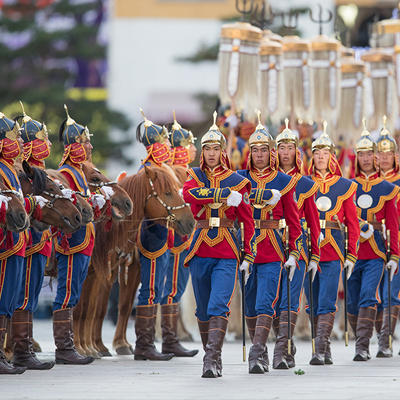
Flora of Mongolia
Flora of Mongolia
Mongolia's flora is diverse and adapted to its varied landscapes, which include deserts, steppes, mountains, and taiga forests.
Steppe Vegetation:
- Feather Grass (Stipa spp.):
- Dominant grass species in Mongolia's steppe regions. It forms dense tussocks and is well-adapted to dry conditions.
- Fescue Grasses (Festuca spp.):
- Common in the mountainous and steppe regions, contributing to the vegetation cover and providing grazing for livestock.
- Aromatic plants that are widespread in Mongolia's steppe and desert regions. They are known for their resilience to harsh conditions.
- Found in the semi-desert and steppe regions, characterized by silvery-gray foliage and aromatic scent.
- Diverse genus with many species found across Mongolia. They play important roles in stabilizing soils and providing forage for animals.
- Various species of wild onions and garlic are found in Mongolia, contributing to the local cuisine and traditional medicine.
- Wormwood (Artemisia spp.):
- Sagebrush (Artemisia frigida):
- Milkvetch (Astragalus spp.):
- Allium species (wild onions and garlic):
Desert Vegetation:
- Saxaul (Haloxylon ammodendron):
- A drought-tolerant shrub or small tree that dominates the Gobi Desert landscapes. It has deep roots to access underground water sources.
- Tamarisk (Tamarix spp.):
- Salt-tolerant shrubs found along desert rivers and oases in Mongolia. They provide shade and stabilize riverbanks.
- Succulent plant species adapted to arid conditions, found in the desert regions of Mongolia.
- Mongolian Euphorbia (Euphorbia mongolica):
Mountainous Vegetation:
- Larch (Larix spp.):
- Coniferous trees found in the higher altitudes of Mongolia's mountains, forming extensive forests in the northern and western regions.
- Juniper (Juniperus spp.):
- Evergreen shrubs or small trees found in the mountainous areas, especially in the northern and western parts of Mongolia.
- Found in the higher elevations of Mongolia, particularly in the Altai and Khangai Mountains. They produce vibrant flowers during the brief summer season.
- Rhododendron (Rhododendron spp.):
Wetland and Riparian Vegetation:
- Sedges and Rushes (Carex spp. and Juncus spp.):
- Common in wetland areas and along rivers in Mongolia, providing habitat for birds and other wildlife.
- Willows (Salix spp.):
- Found along rivers and streams, providing important habitat for birds and stabilizing riverbanks.
Endemic and Rare Species:
- Mongolian Peony (Paeonia mongolica):
- A rare and protected plant species found in mountainous regions of Mongolia. It produces large, fragrant flowers.
- Mongolian Endemic Rhubarb (Rheum nanum):
- Endemic to Mongolia, found in alpine meadows and mountain slopes. It has medicinal uses in traditional Mongolian medicine.
Conservation and Threats:
Mongolia's flora face threats from overgrazing, habitat loss due to mining activities, climate change impacts such as desertification, and illegal collection for medicinal or ornamental purposes. Conservation efforts are increasingly important to preserve Mongolia's unique plant species and ecosystems.
Understanding and protecting Mongolia's flora is crucial not only for biodiversity conservation but also for maintaining the ecological balance and supporting traditional livelihoods that depend on sustainable use of natural resources.










.jpg)



















